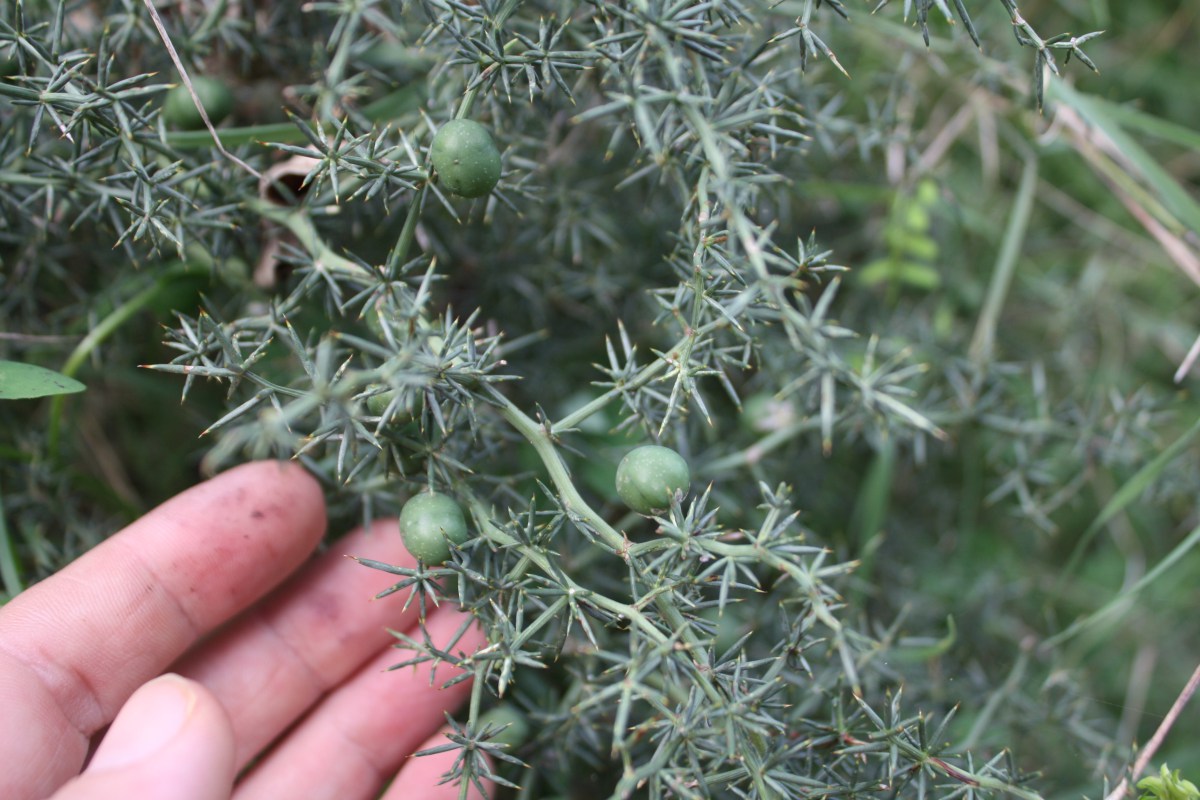BACKGROUND, ORIGIN AND DISTRIBUTION
Asparagus is a member of the Liliaceae family, related to such familiar plants as onion, garlic, and tulips.
There are around 300 species of asparagus worldwide, 15 of which can be found in the Mediterranean region. Asparagus prostratus, once considered to be a subspecies of A. officinalis, is now thought to be an entirely separate species. I believe it is Asparagus prostratus that I have photographed here in Montenegro.
USES AND ETHNOBOTANY
Wild asparagus is typically picked in spring in Greece, Montenegro and other parts of the Mediterranean Basin. It does, however come up here and there during warm winters in the almost subtropical climate of the Southern Ionian Sea in Greece. In Greece a purple variety seems to be most common in the winter.
Asparagus.org notes asparagus is one of the most nutritionally well balanced vegetables in existence. According to NutritionData.com asparagus is low in saturated fat, and very low in cholesterol and sodium. It is also a good source of pantothenic acid, calcium, magnesium, zinc and selenium, and a very good source of dietary fiber, protein, vitamin A, vitamin C, vitamin E (Alpha Tocopherol), vitamin K, thiamin, riboflavin, niacin, vitamin B6, folate, iron, phosphorus, potassium, copper and manganese.





